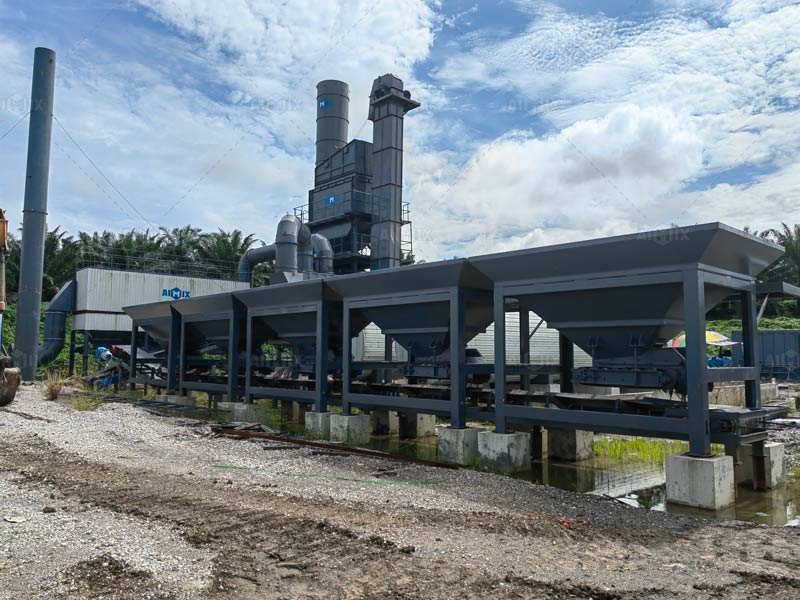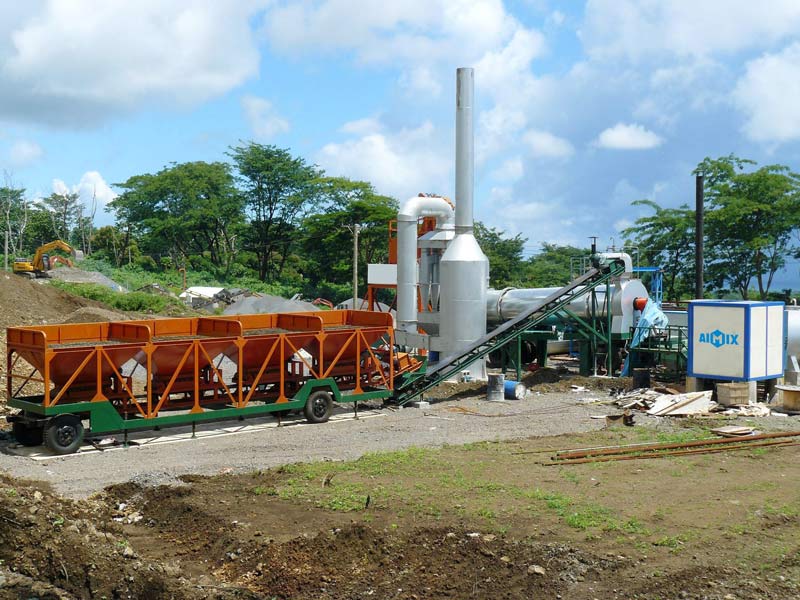Energy efficiency has become a top priority in modern asphalt production. One of the most effective ways to reduce operating costs in an asphalt plant is by using circulating heating equipment. This advanced system optimizes the heating process, significantly lowering fuel consumption and cutting expenses. Whether you’re running a batch type asphalt plant or a mobile asphalt plant, integrating circulating heating technology can lead to substantial financial benefits.
1. Understanding Circulating Heating Equipment
What Is Circulating Heating Equipment?
Circulating heating equipment is a closed-loop thermal system used to maintain consistent temperatures in bitumen tanks and pipelines. Instead of relying on direct-fired systems, this method circulates heat transfer oil through coils, ensuring even and energy-efficient heating across the plant.
How It Works in an Asphalt Plant
In an asphalt plant, this system keeps bitumen at optimal temperatures during storage, transfer, and mixing. It eliminates overheating, reduces energy waste, and improves the lifespan of the material, contributing to higher product quality and cost savings for the asphalt plant(precio de planta de asfalto).

2. Cost Breakdown of Traditional Heating Systems
Fuel Consumption
Traditional direct heating systems often consume large volumes of diesel or heavy oil. In large plants, this could mean thousands of liters monthly, resulting in high operational costs, especially when oil prices rise.
Maintenance and Wear
Direct-fired systems frequently cause carbon buildup and equipment wear due to uneven heating. This leads to more frequent maintenance and part replacements, increasing downtime and costs over time.
3. Energy Savings from Circulating Heating Equipment
Lower Fuel Usage
Circulating heating systems can reduce fuel consumption by up to 30-40% compared to conventional systems. For example, if an asphalt plant(planta asfaltos) spends $10,000/month on fuel, switching to circulating heating could save around $3,000 to $4,000 monthly.
Better Heat Retention
The closed-loop system ensures minimal heat loss, maintaining consistent temperatures for longer periods without the need for constant reheating. This leads to lower burner run times and greater energy conservation.
4. Impact on Asphalt Plant Price and ROI
Initial Investment Considerations
While circulating heating equipment adds to the asphalt plant price initially, the return on investment is typically fast. In most cases, operators can recover the additional cost within 1 to 2 years through fuel savings and reduced maintenance expenses.
Long-Term Cost Benefits
Over a decade of operation, the energy cost savings can amount to tens or even hundreds of thousands of dollars. This makes it a smart long-term investment, especially for companies operating multiple plants.
5. Application in Different Plant Types
Batch Type Asphalt Plant
A batch type asphalt plant(planta de asfalto discontinua) benefits greatly from temperature stability during the mixing cycle. Consistent heat helps ensure uniform mix quality and prevents binder degradation, reducing material waste and rework costs.
Mobile Asphalt Plant
For a mobile asphalt plant, space and energy efficiency are key. Compact circulating heating systems offer mobility and energy savings in remote or short-term projects, where fuel logistics can be challenging and expensive.
6. Environmental and Regulatory Benefits
Lower Emissions
Using less fuel means fewer greenhouse gas emissions. Plants with circulating heating systems are more likely to meet environmental standards and avoid penalties, especially in regions with strict regulations.
Improved Sustainability Image
Construction companies increasingly value sustainability. Asphalt plants that reduce energy usage position themselves as eco-conscious partners, potentially attracting more business from environmentally focused clients.

7. Maintenance and Operational Advantages
Reduced Equipment Stress
Stable heating means less thermal shock to the pipelines and storage tanks. This extends the life of the plant components, saving on replacements and reducing plant downtime.
Less Frequent System Cleaning
Since the heating is more uniform and cleaner, there’s less carbon buildup in pipes and burners. Maintenance intervals can be extended, saving on labor and shutdown costs.
8. Real-World Savings Example
Case Scenario: Mid-Sized Asphalt Plant
Consider a 100-ton/hour asphalt plant operating 20 days per month. Traditional heating systems might consume 20,000 liters of fuel monthly. At $1/liter, this equals $20,000. By adopting circulating heating, fuel consumption could drop by 35%, saving $7,000/month or $84,000 annually.
Mobile Plant Savings
A mobile asphalt plant(planta de asfalto movil) producing smaller batches may save $2,000–$3,000/month, depending on usage frequency and climate conditions. For contractors moving between sites, this adds flexibility and cost-efficiency.
Conclusion
Circulating heating equipment brings remarkable financial advantages to both stationary and mobile asphalt plant operations. Though it may slightly increase the initial asphalt plant price, the resulting fuel savings, reduced maintenance, and longer equipment life make it a cost-effective solution in the long run. Whether you’re managing a high-output facility or a batch type asphalt plant for municipal projects, investing in efficient heating technology is a smart step toward energy savings and sustainable profitability.